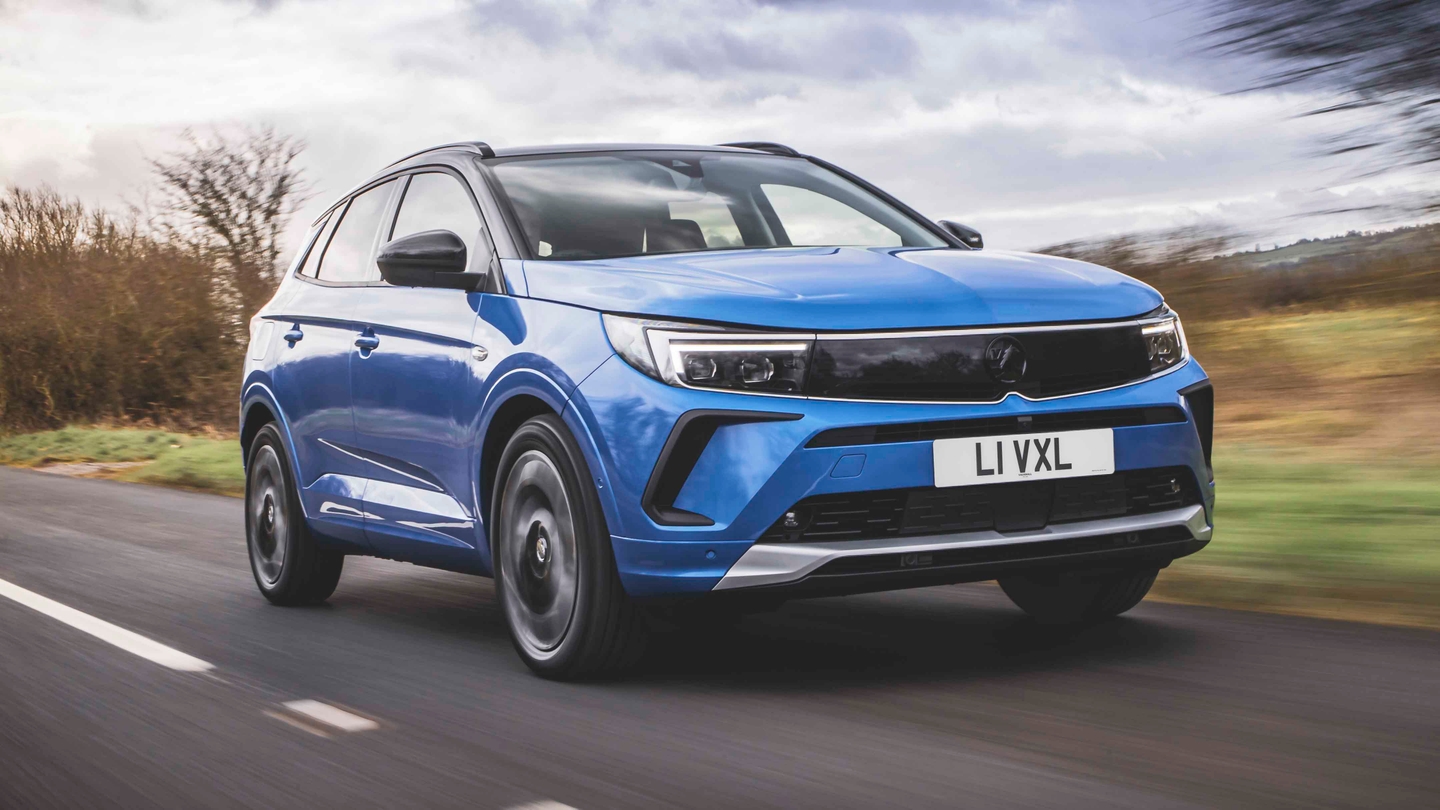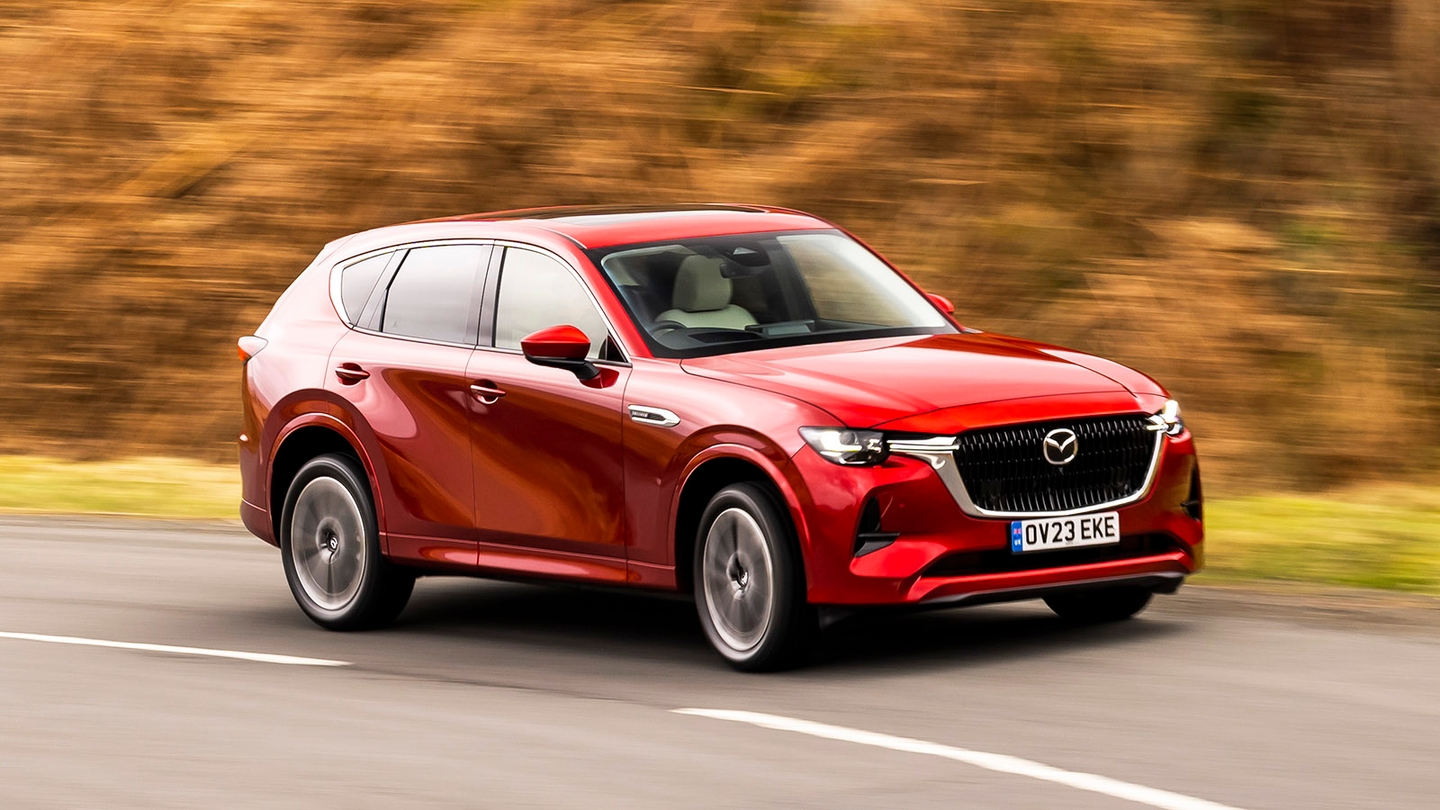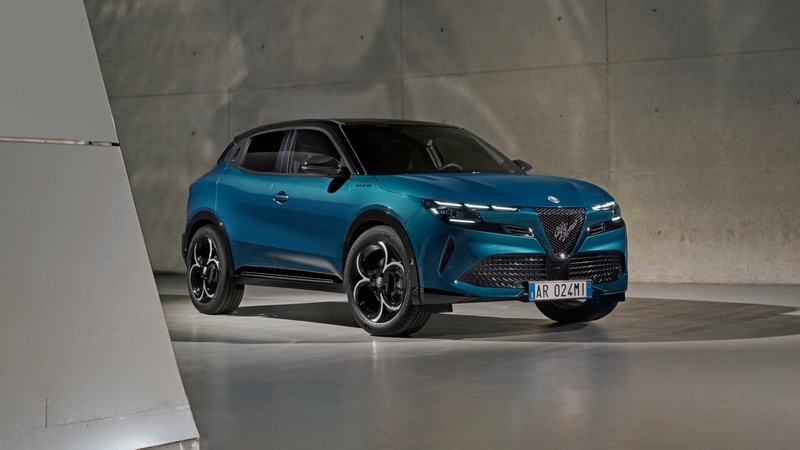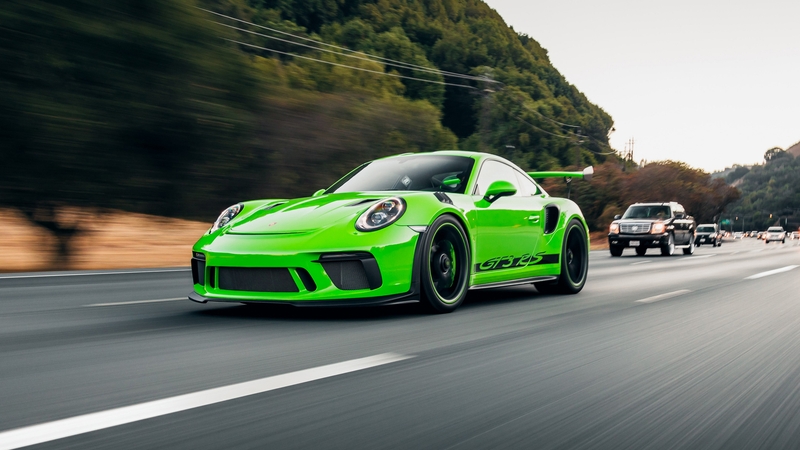
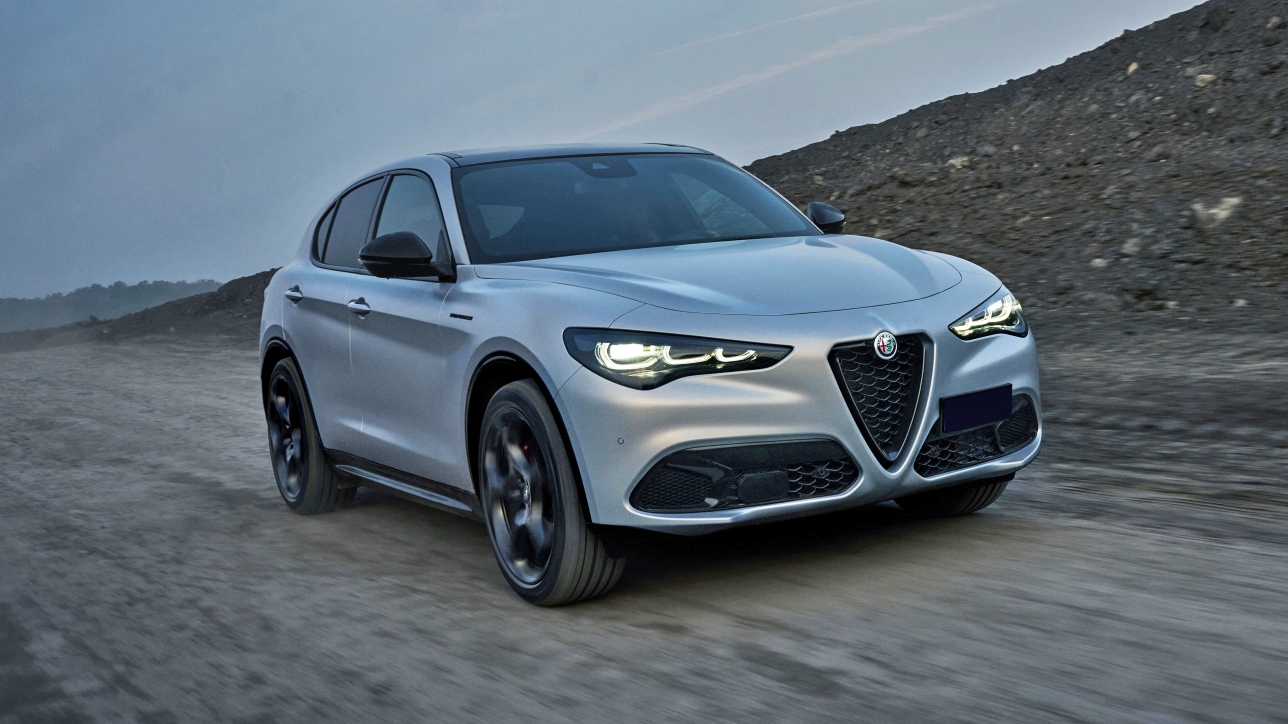
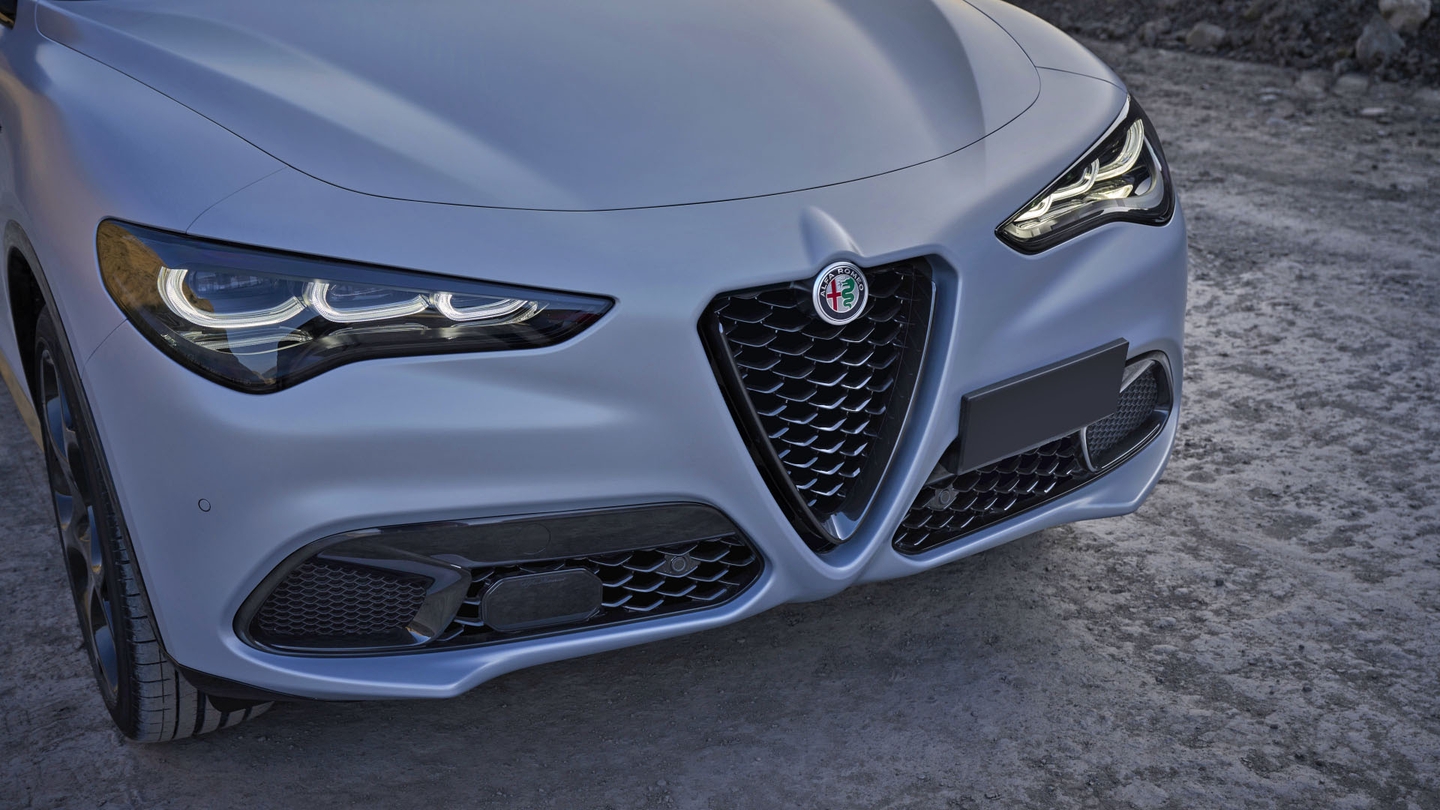
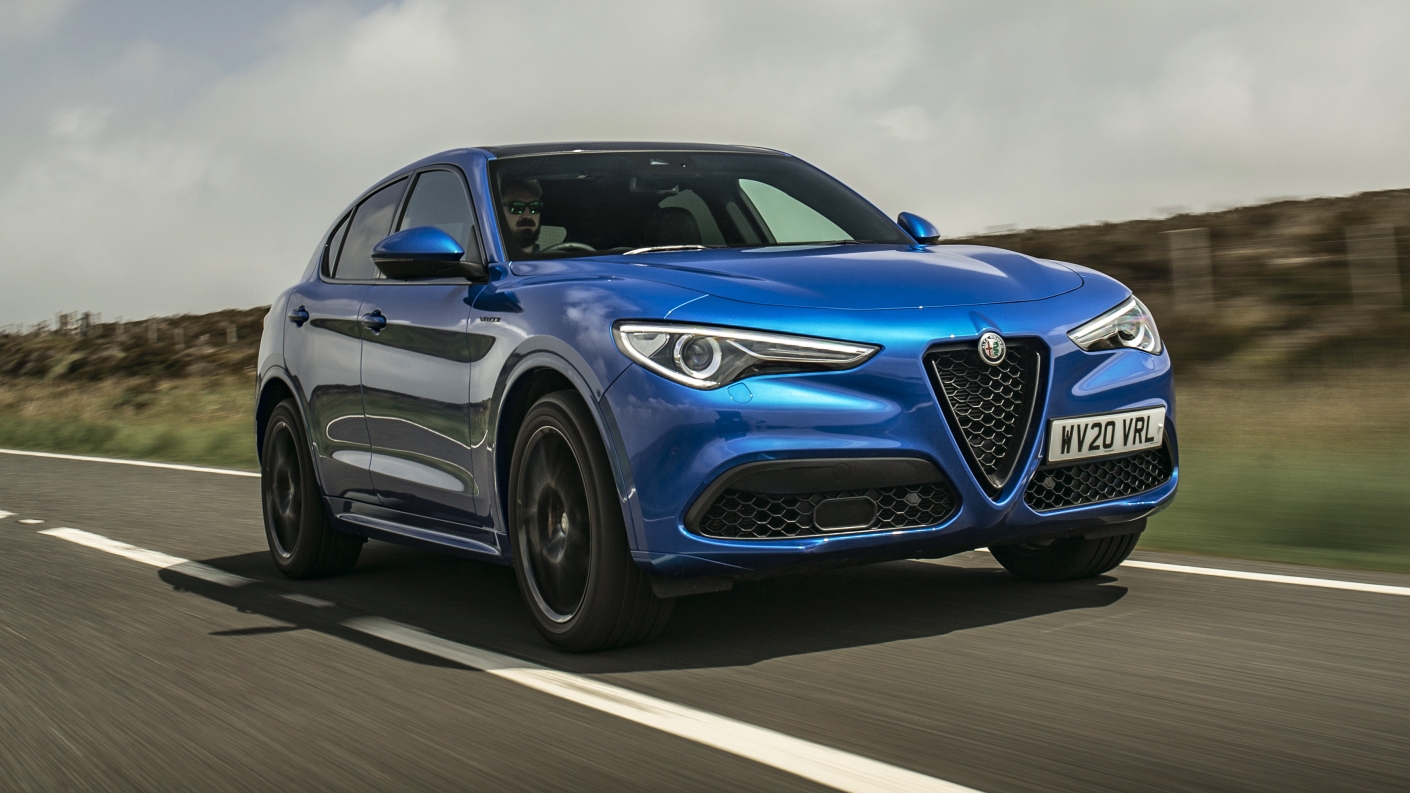
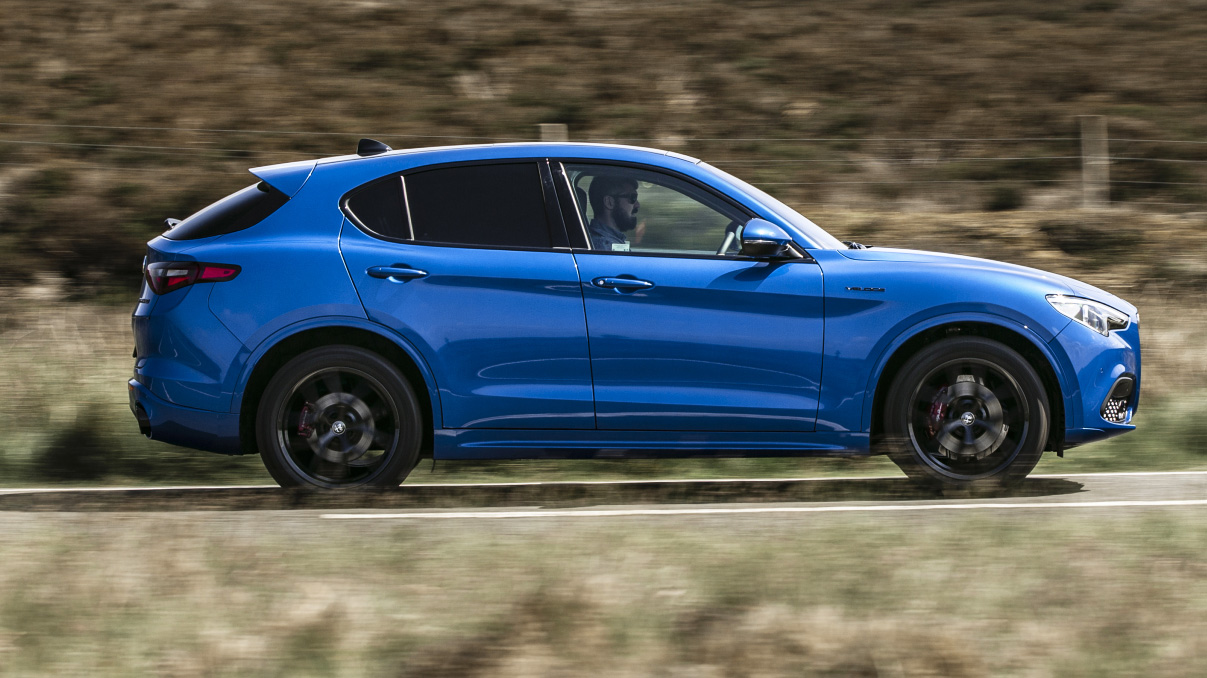
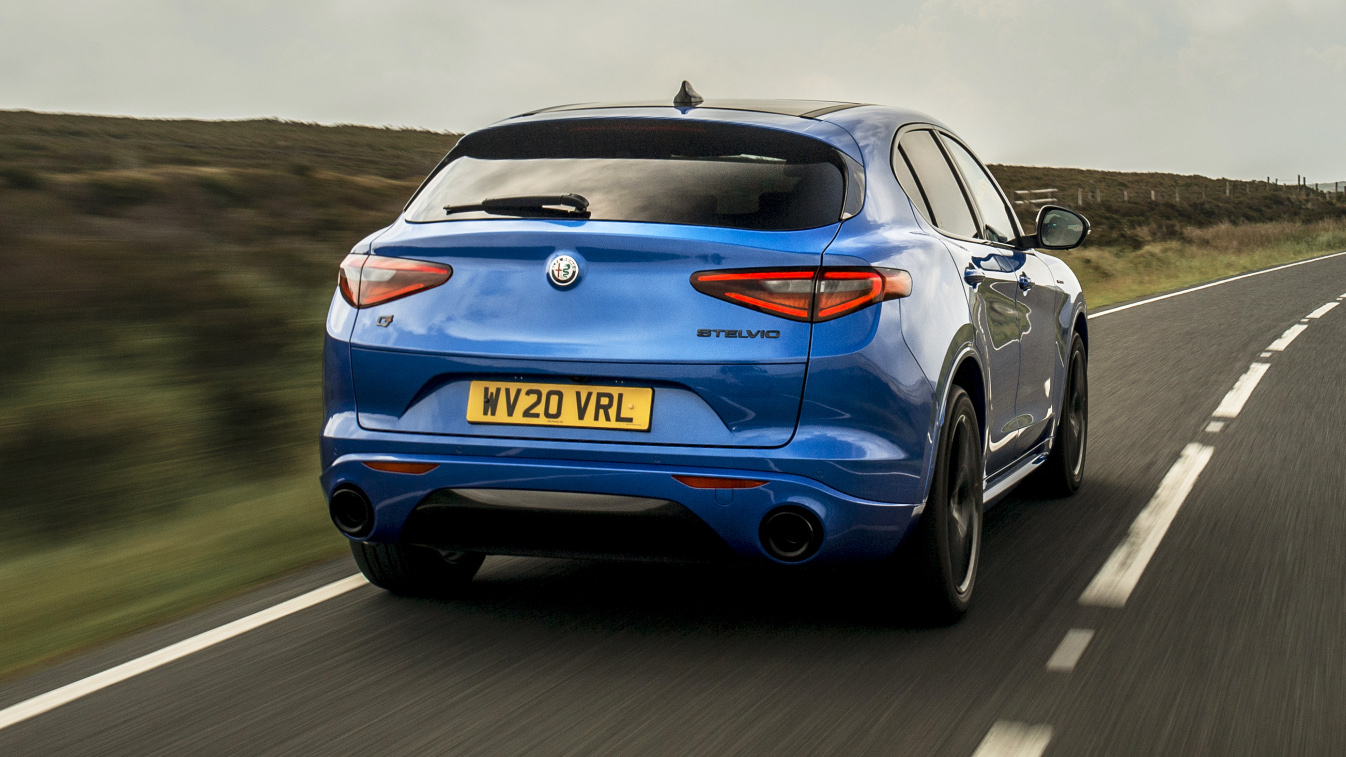
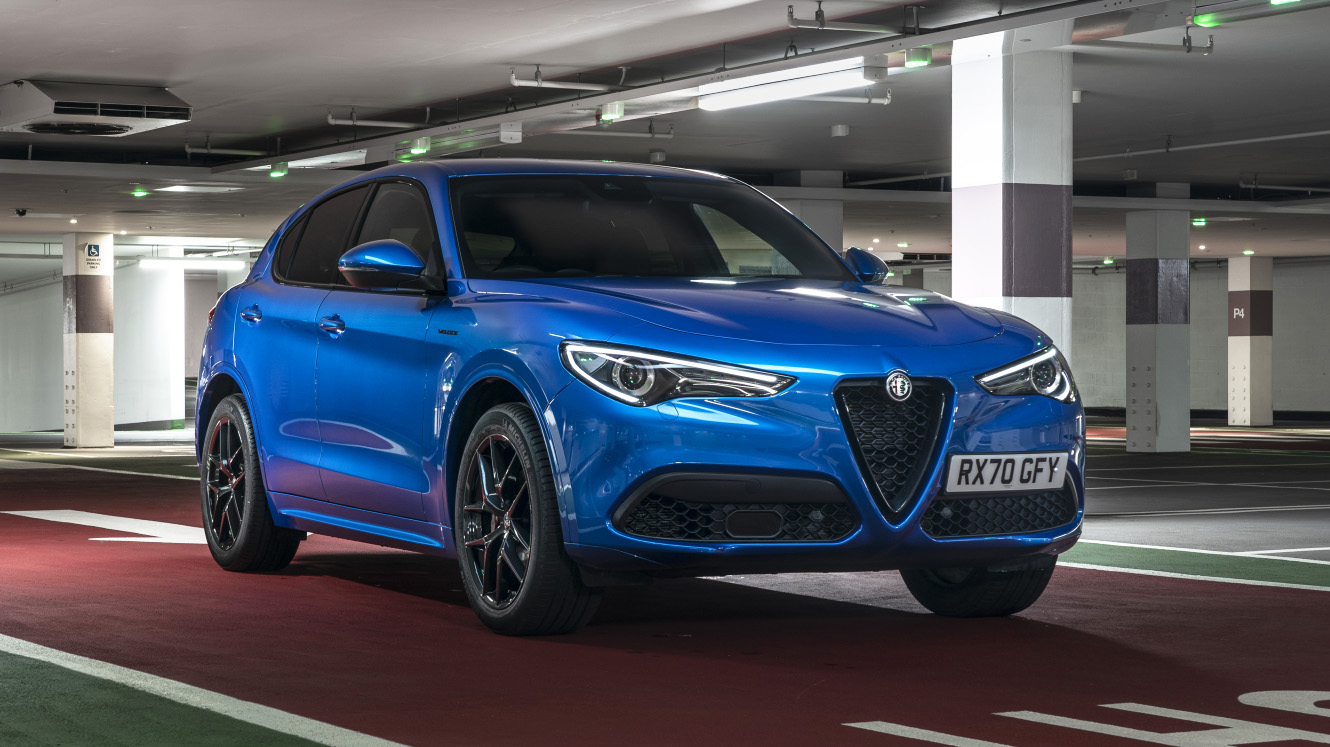

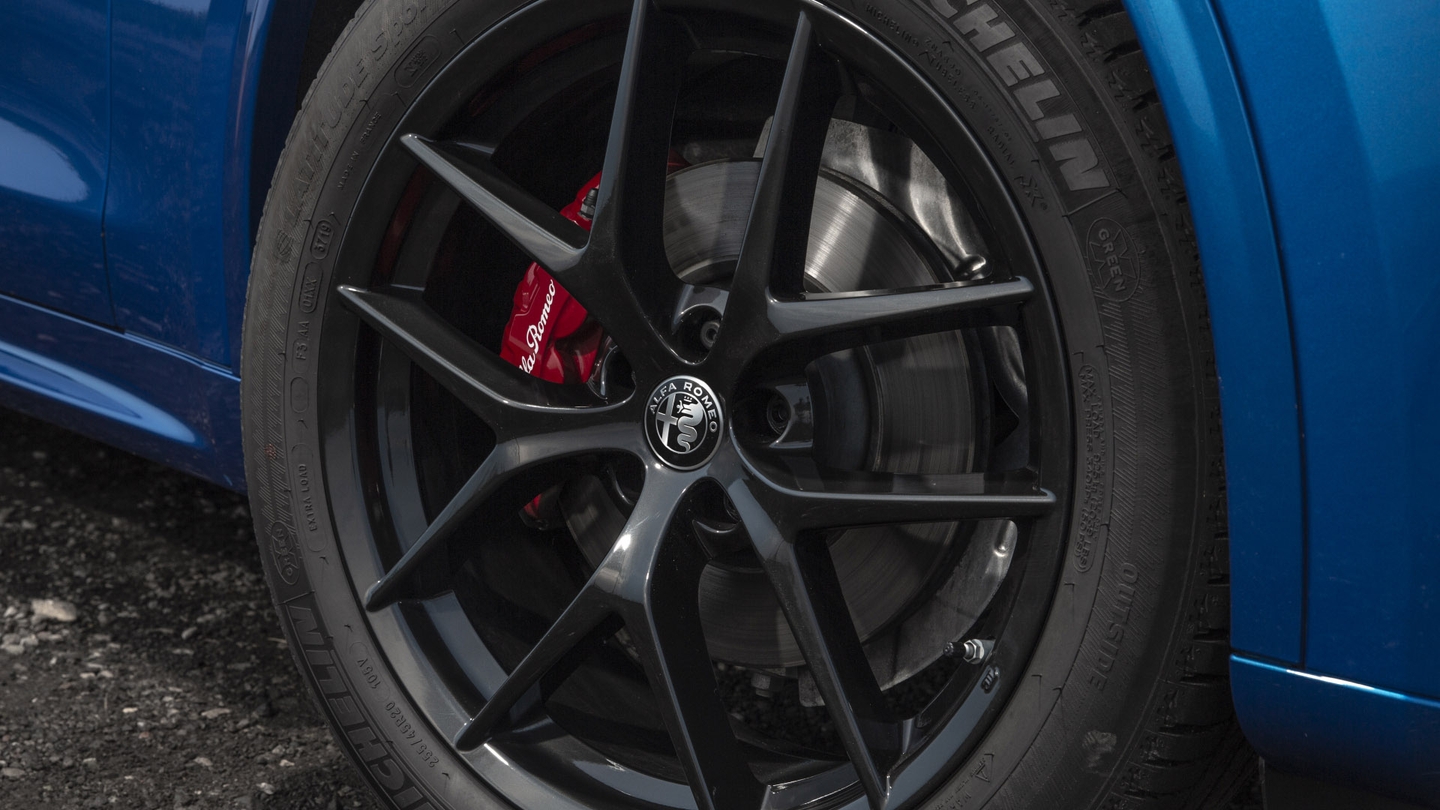
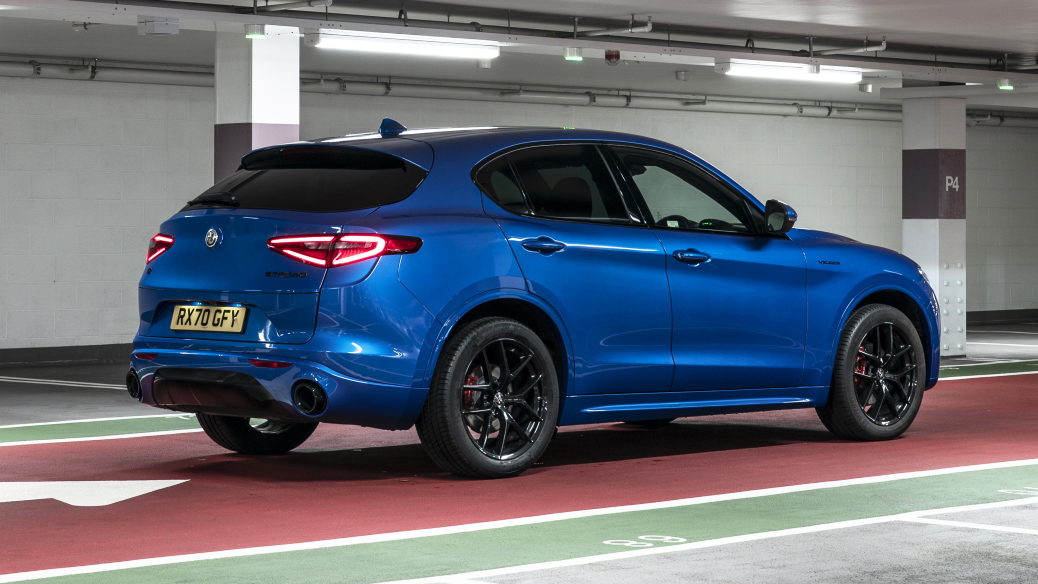
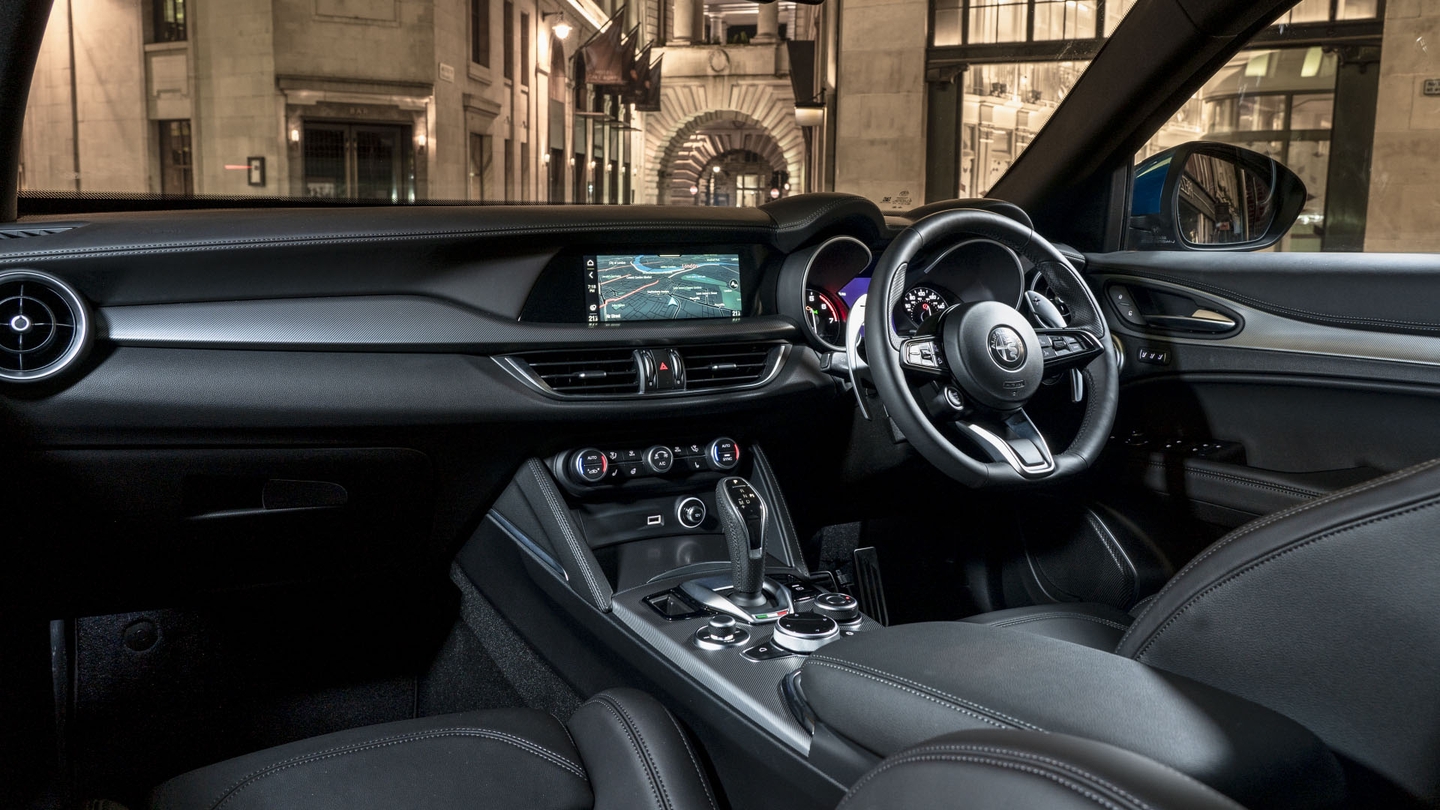
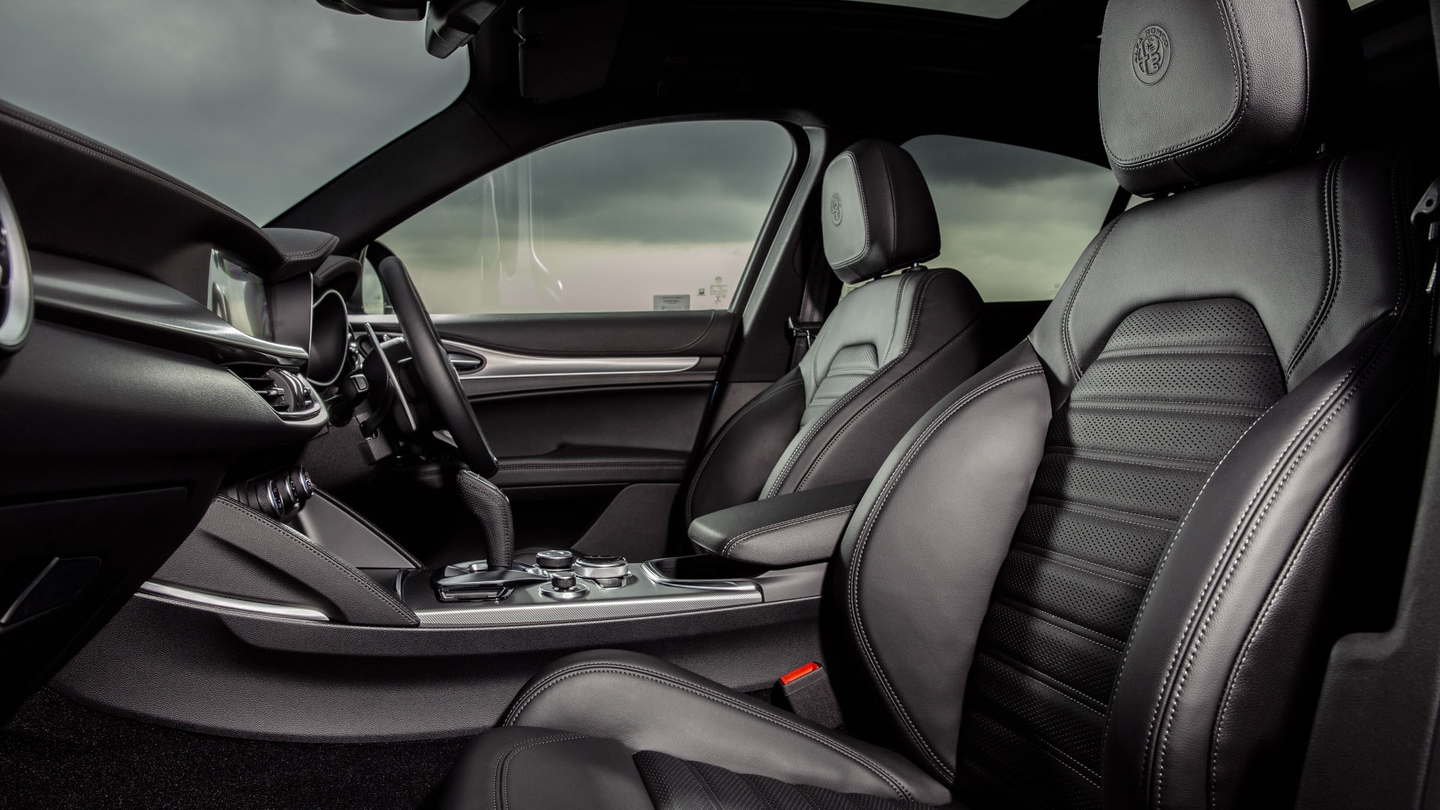
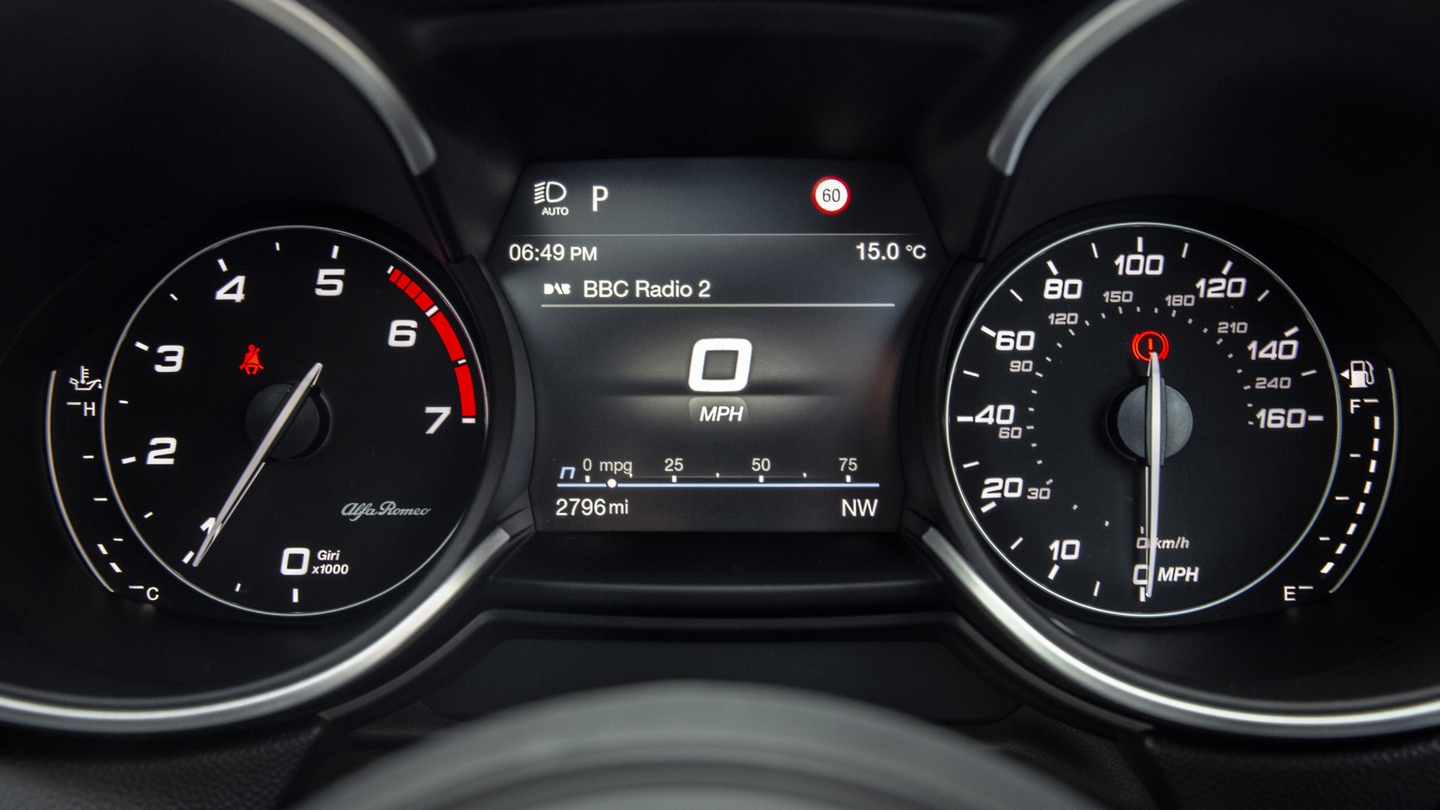
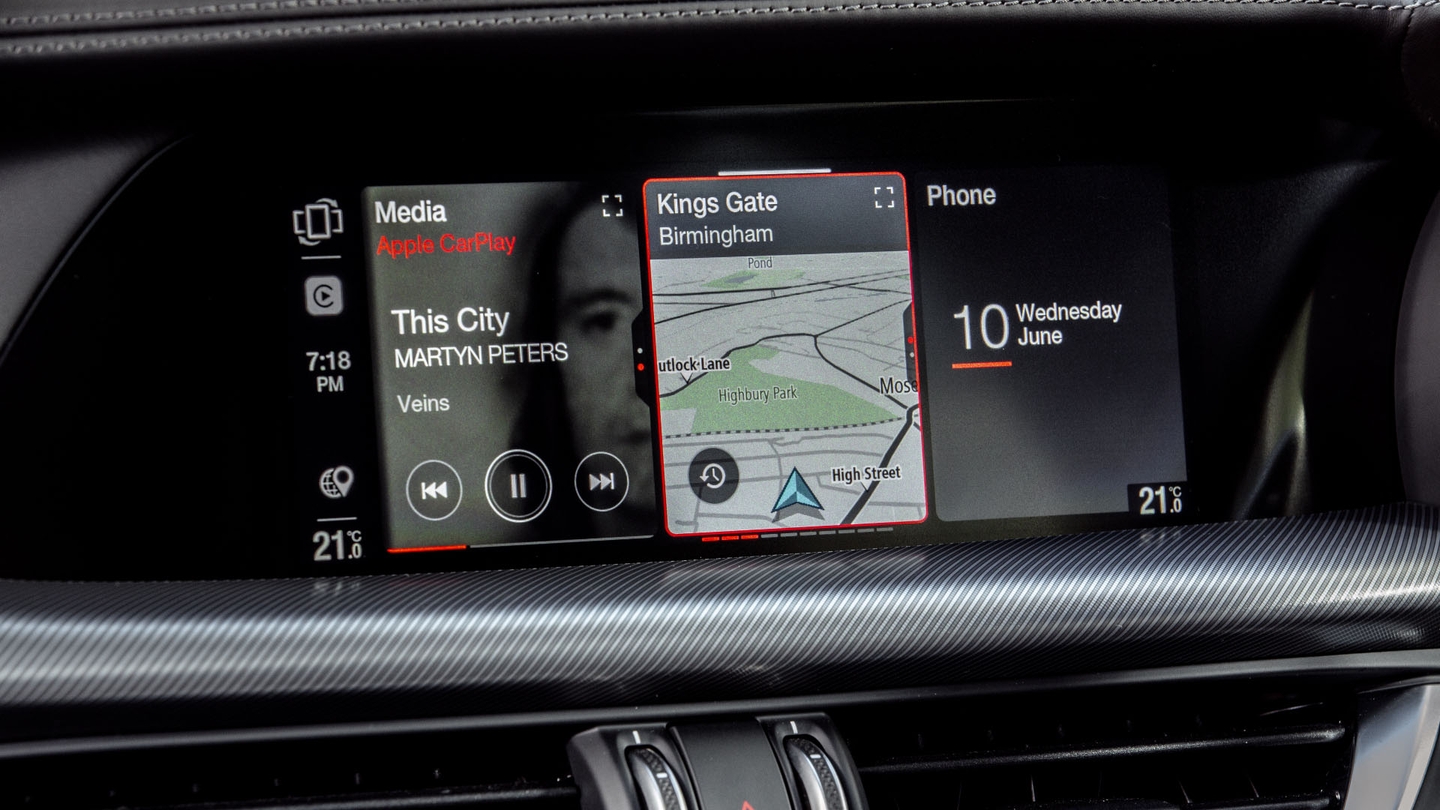
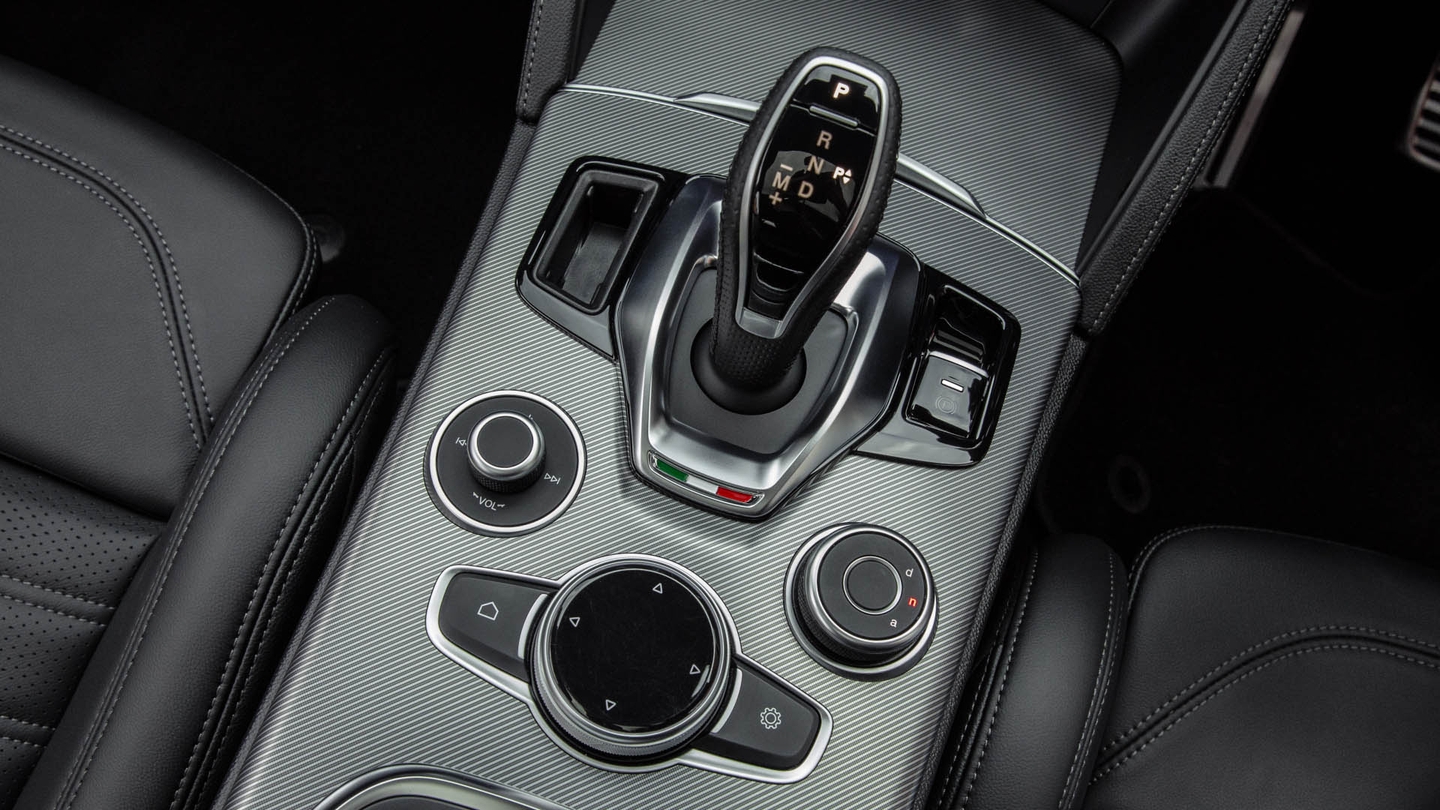
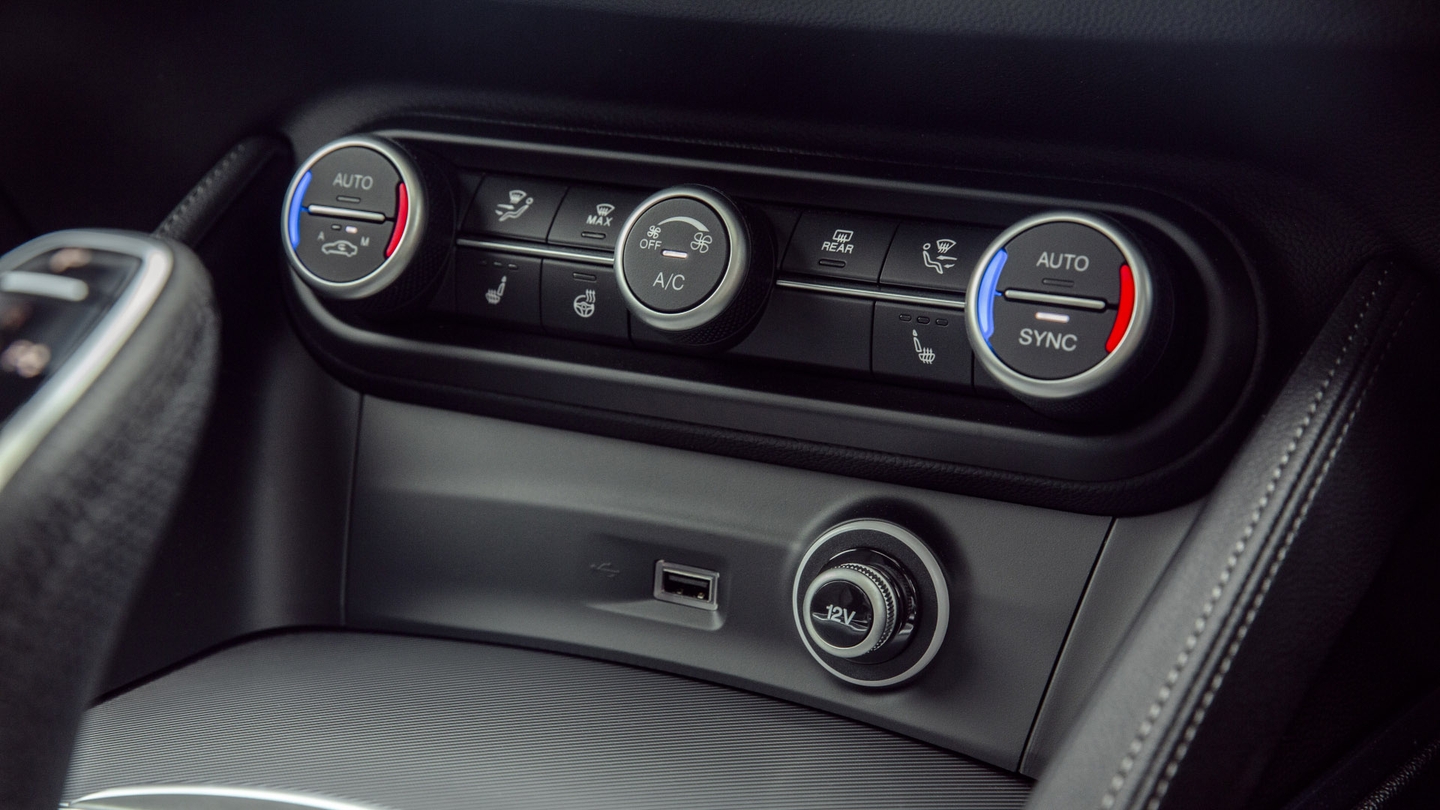
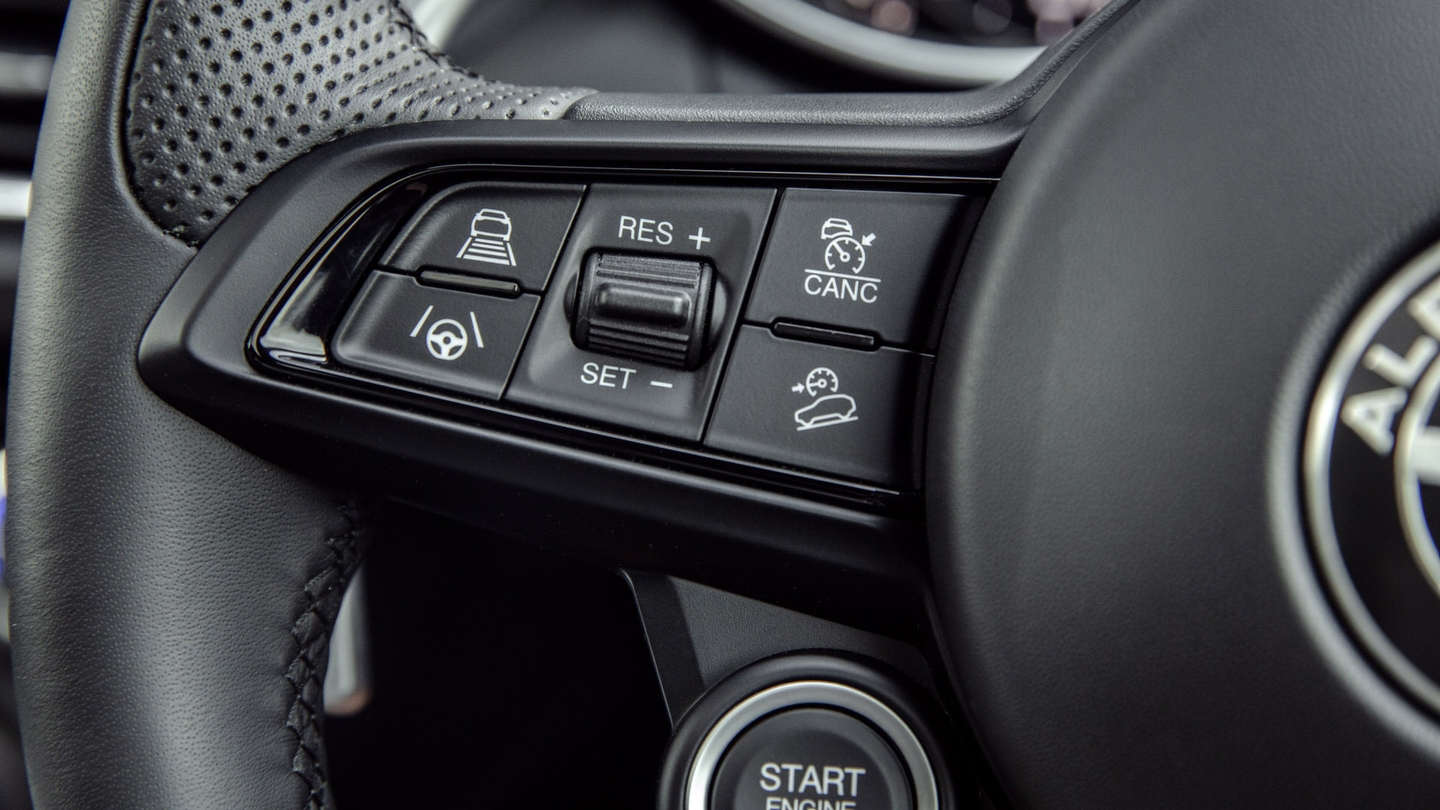
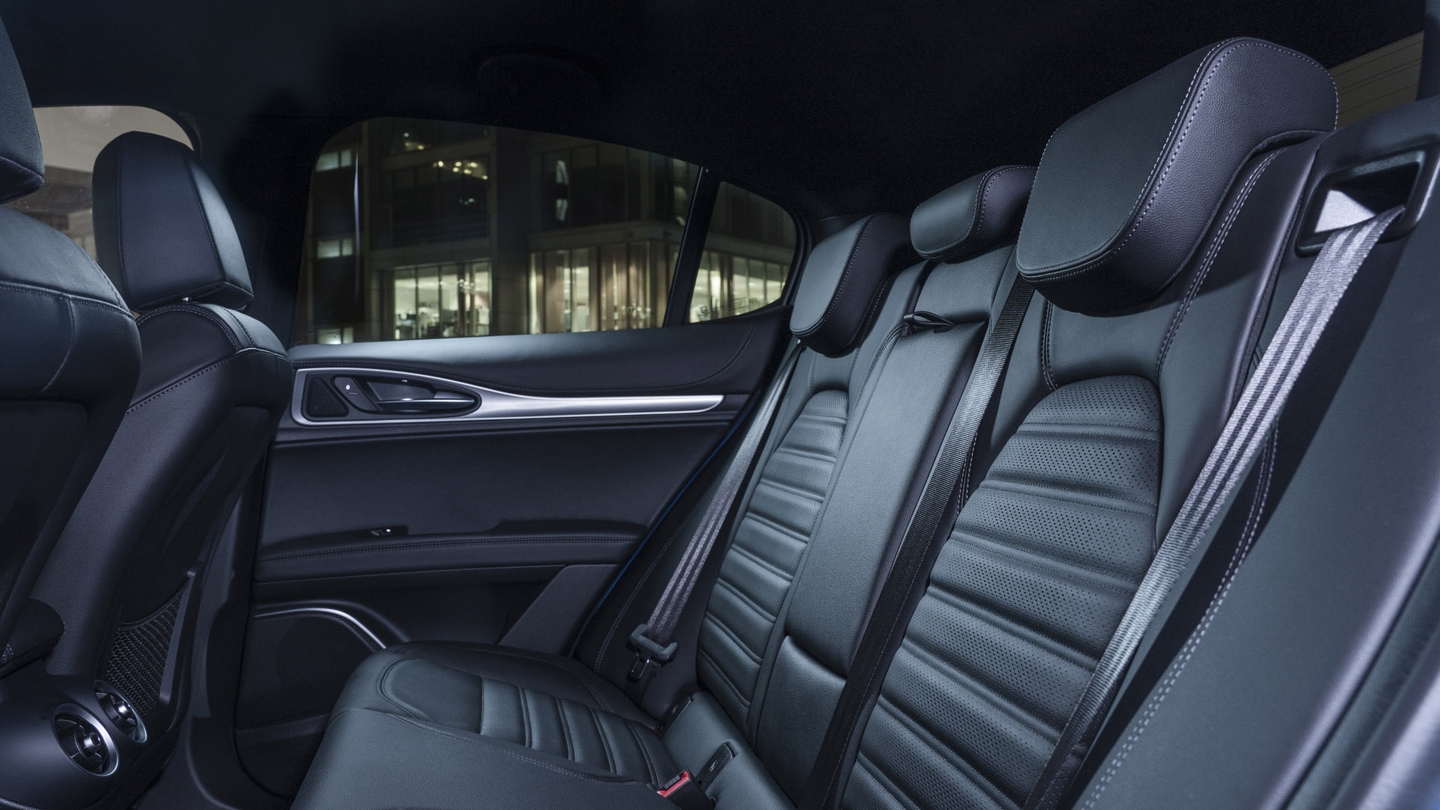
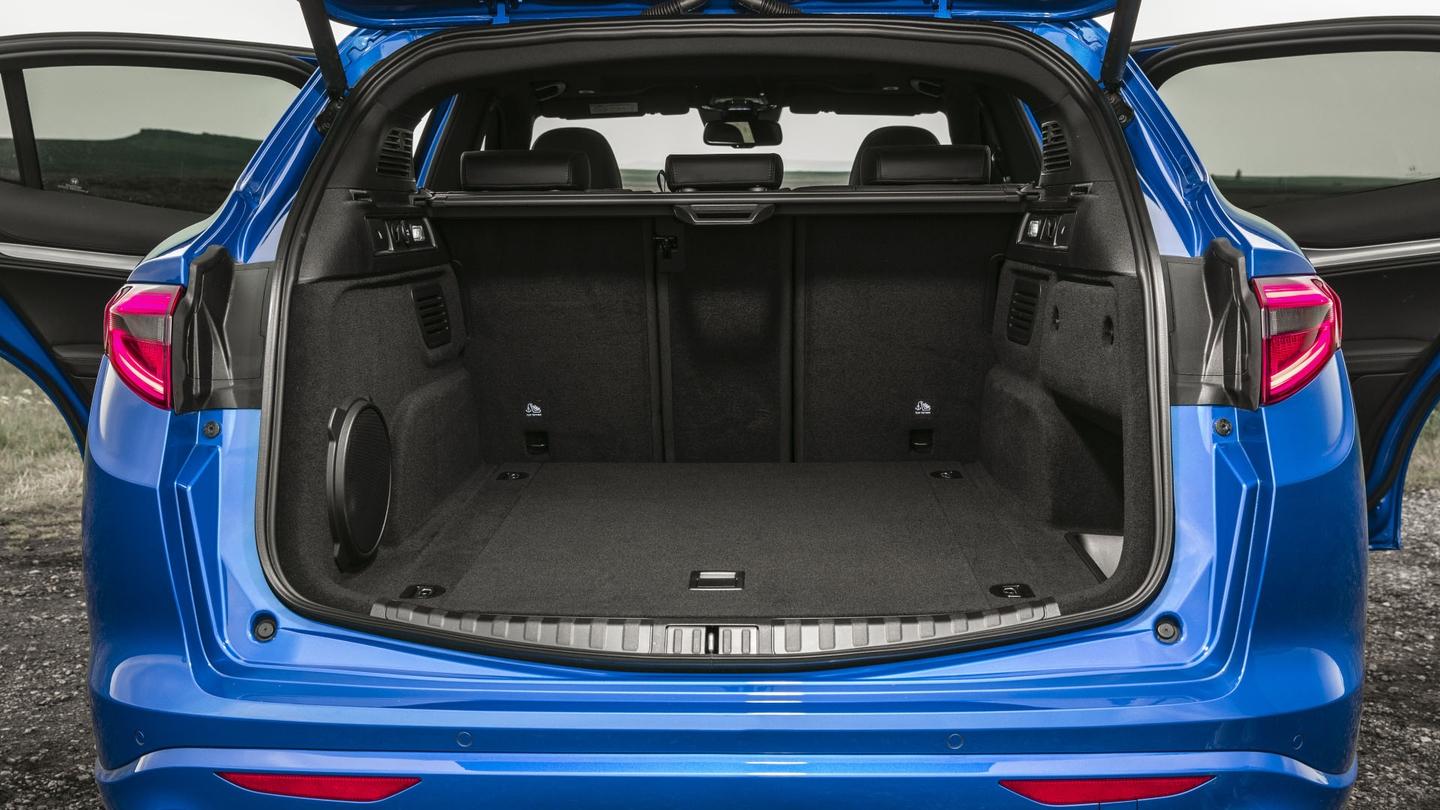
Alfa Romeo Stelvio Review

The Alfa Romeo Stelvio is a left-field alternative to the likes of the Audi Q5 and BMW X3.
It’s a top choice for keen drivers who need estate-rivalling space, although you need to overlook the Stelvio’s petrol addiction.
- Feels special
- Drives really well
- Comfortable seats
- Powerful versions are firm and uneconomical
- Rear-seat space is worse than rivals
- Poor turning circle
Should I buy an Alfa Romeo Stelvio?
With its surly headlights, deep triangular grille and muscular body work, the Alfa Romeo Stelvio certainly makes a strong first impression.
Passers-by will turn around and take notice of Alfa Romeo’s largest SUV – it stands out against more familiar rivals such as the Audi Q5, Mercedes GLC and BMW X3.
"You soon get used to chucking the Stelvio into fast corners"
If you’re a bit bored of the usual German suspects, the Alfa Romeo is worth a look. Many cars are happy to just fade into the background and simply be a mode of transport, but the Stelvio worms its way into your brain and makes you feel things.
Objectively, the cars we’ve just mentioned are better all rounders, with more space, better infotainment software, more comfort and more polished driving manners. The Stelvio wholeheartedly appeals to keen drivers, with a range of powerful engines and sports car-like handling, but feels more of a specialist tool than its bigger-selling rivals. There’s also the Porsche Macan to consider, which makes the Stelvio’s job harder still.
Interior and technology

Climb aboard the Stelvio and you’re met with a lovely-looking cabin. The thin-rimmed steering wheel is lovely to hold, and high-spec cars get a pair of superb aluminium gearshift paddles pinched from the blazingly fast Quadrifoglio range-topper.
Elsewhere, while the X3 and GLC do have more premium-feeling materials, the Stelvio doesn’t do too badly. Throughout the Stelvio’s lifespan, a string of updates every year or two has gradually improved the interior quality, so newer models feel a bit plusher than early Stelvios.
The seats are really comfy and nicely snug, with plenty of adjustment to suit your preferences. There’s still a lot of physical switchgear that’s easy to use while driving, even if it means the Stelvio doesn’t feel quite as cutting-edge as the X3 or GLC.
Visibility all-around is decent enough, with the usual caveat that the rear windscreen is a bit pinched, and the view out of the front is helped by the infotainment screen being integrated into the dashboard.

That 8.8-inch wide-ratio touchscreen is quite small by modern standards, and it isn’t as good to use as more modern setups in the X3, GLC and Q5. Response times are slow and laggy, the reversing camera is grainy and the display looks like it’s buried behind another screen. Apple CarPlay and Android Auto still rely on a wired connection, too. On the other hand, it’s sensibly laid out and can be controlled via a scroll wheel and buttons on the centre console.
More recent (2023-on) Stelvios get a fully digital 12.3-inch instrument cluster, with a mode for showing just the essential information and another that gives a ‘heritage’ appearance. This screen is clear and simple, although we expect that some buyers will prefer the traditional analogue dials in earlier Stelvio models.
At the same time, Alfa Romeo slimmed down the trim level range to just Sprint and Veloce. Formerly a mid-range trim, Sprint includes 19-inch alloy wheels, wireless phone charging and auto LED headlights with high-beam assist. Veloce gets a set of 20s, plus tinted rear windows, Brembo brakes, heated leather sports seats with electric adjustment, a limited-slip differential for improved cornering and a heated steering wheel. The raucous Quadrifoglio performance model includes carbon fibre trim inside and out, a premium Harman Kardon sound system and upgraded suspension.
Practicality

At just under 4.7 metres long, the Stelvio is a little shorter than the X3, GLC and Q5, which immediately doesn’t help the Stelvio’s space credentials. The long and short of it is that the Alfa’s main rivals are more spacious inside. In comparison, the Stelvio feels a bit snug for passengers, although most adults should have enough space.
Legroom and headroom are both merely okay, meaning that tall adults or bulky child seats might be a bit of a squeeze. Three adults should be able to sit side-by-side for short journeys, as long as they don’t mind sharing two footwells. Storage space is a bit tight, with small door pockets. It is easy to get kids in and out, however.
The 525-litre boot is competitive, and is a very useful shape. There’s not much of a load lip to get heavy items over, but a few clever features in the boot wouldn’t go amiss. Also, there’s not much additional boot space above the parcel shelf, and when we used the Stelvio for a week’s camping holiday it proved to be a little short on luggage space.
Engines and performance

Most Stelvios come with a 2.0-litre four-cylinder petrol engine, with either 200hp or 280hp. It used to be the case that only the Veloce got the more powerful version, but since 2023 the 280 is the only choice, so it’s fitted in the lesser Sprint model too.
There is a 210hp diesel still knocking around, but rare – despite offering far more miles to a tank than the petrol engine. Up to 47mpg is possible in the diesel – a bit better than the Q5 40 TDI – compared to an official 33mpg for the 280 petrol. And, in 4,000 miles with the Veloce petrol, we only chalked up 28mpg – not far off what you’d get in the V6-engined Quadrifoglio. Frequent fuel station visits are to be expected.

Speaking of the Quadrifoglio, this clover leaf-badged Stelvio has a 2.9-litre six-cylinder engine that had magic sprinkled on it by Ferrari. With 510hp, two turbos and four-wheel drive, the Quad hits 0-62mph in a supercar-like 3.8 seconds.
The more attainable Veloce isn’t too far behind, with the 0-62mph dash taking just 5.7 seconds. Even the diesel, which is supposed to be more sensible, dispatches the sprint in 6.6 seconds.
One area where the Stelvio lags behind the competition is that it doesn’t offer any electrification whatsoever. There’s no hybrid or plug-in hybrid model, which you’ll find in rival cars – mostly to appeal to company-car drivers, but these hybrids also offer lower running costs for private buyers.
Driving and comfort
This is why you’d buy a Stelvio over something like a Q5 or GLC. The X3 and Macan are harder to ignore, because they’re great to drive as well, but if you like driving it’s certainly worth test-driving the Stelvio to see how it fits.
Alfa Romeo has put real effort into the Stelvio’s underpinnings. The Stelvio is a light car for its size, and includes a carbon-fibre propshaft and aluminium suspension components. And while the Stelvio sits 22cm higher up than the Giulia it shares a platform with, Alfa has managed to make the tall Stelvio drive like a low-down sports saloon.

The quick steering is direct and responsive, which might put you on the wrong foot at first, but you soon get used to chucking the Stelvio into fast corners. It’s grippy, too, thanks in part to big tyres and the standard-fit four-wheel-drive system. On a back road you’ll be able to keep up with sports cars in your practical family SUV.
There’s no doubt that the 280hp petrol engine is fast, but it doesn’t feel quite as fast as the same engine in the smaller Giulia. We also found the engine a bit droney at normal revs – further up the rev range it sounds fantastic.
If you can afford the fire-breathing Quadrifoglio, you’re in for a good time. The combination of a well-tuned powertrain, serious acceleration and impressive agility is intoxicating, and the grip on offer means it’s fast in any weather and on any road. Even the standard Stelvio is rear-biased, but the Quadrifoglio includes a Race setting that loosens off the stability control a little and makes the car even more playful.



